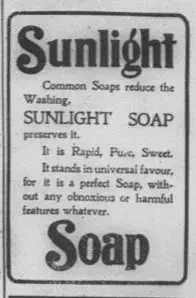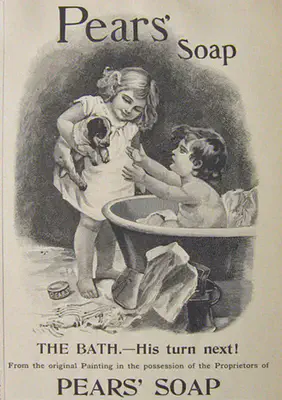Clean Killer
 Image was printed in 1905 to promote a safe soap in the same newspaper issue that mentioned harmful soap products.
Image was printed in 1905 to promote a safe soap in the same newspaper issue that mentioned harmful soap products.During a time when merchandise regulation is not nearly as controlled as it is now, it can be expected that there will be defaults in the products produced. [Salicylate of soda](https://www.ncbi.nlm.nih.gov/pmc/articles/PMC2220712/?page=1 Define Salicylate of Soda") was thought to have restorative effects during the mid to late 19th century. It was often recommended to people with joint disease, such as rheumatism, to alleviate pain. At first the negative side effects associated with salicylate of soda reported were minor, like a relapse in pain after the salicylate of soda was no longer being used. Many users had to be gradually weaned from the chemical.

A few years after its use in soap, physicians began noting that people who were repeated salicylate of soda users had painful skin and there was even a case of failing vision after taking a bath in the soap with the chemicals. In the early 1900s, manufacturers of soap products containing the chemical were ordered to stop production and were prosecuted by the sanitary administration. Large soap companies during this time, like Pears’ Soap, were not being advertised because of the ordeal. Instead, the same issue of the newspaper that published the harmful soap announcement had an ad for Sunlight Soap, which advertises its lack of “obnoxious or harmful feature.” This small news brief gives insight about this time period, showing its lack of medical knowledge and its clever marketing methods.
